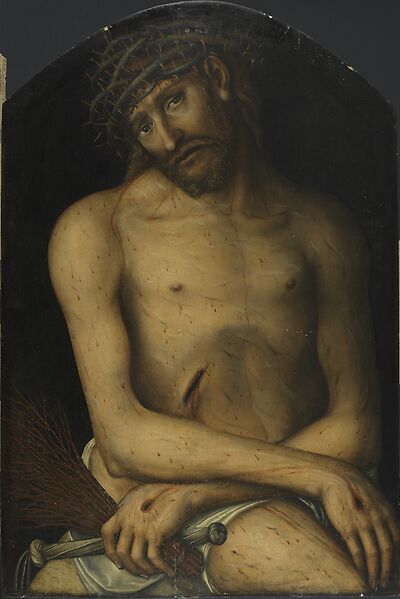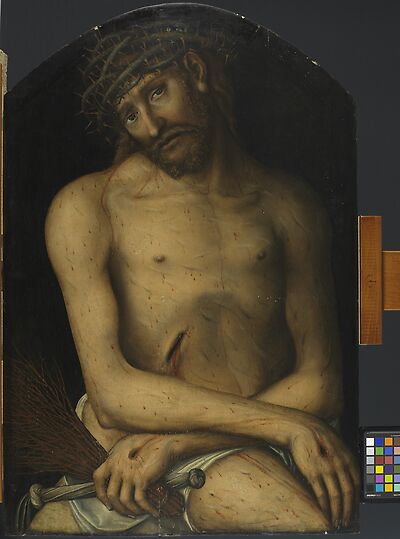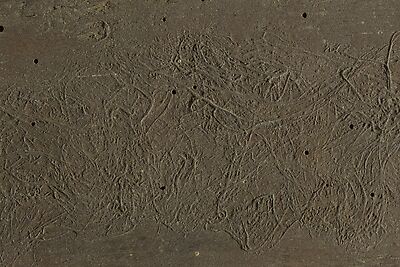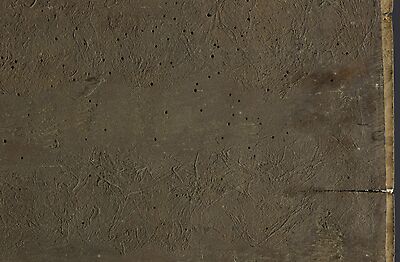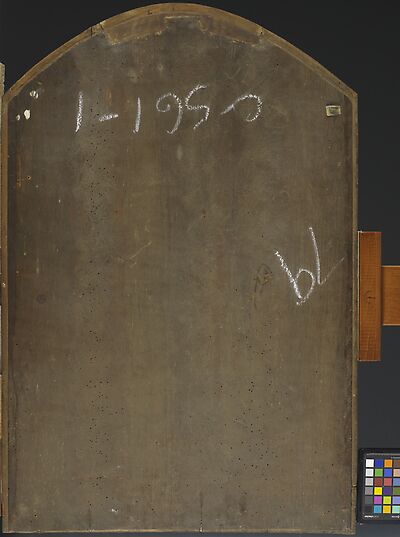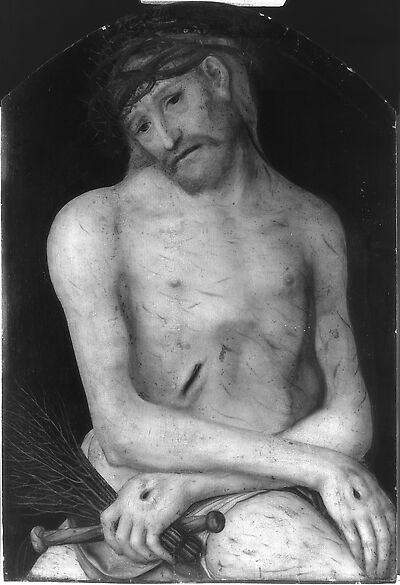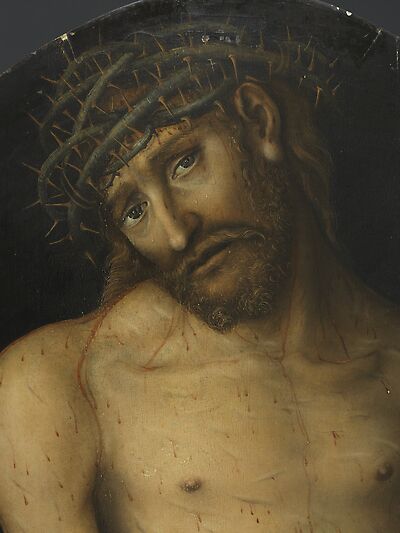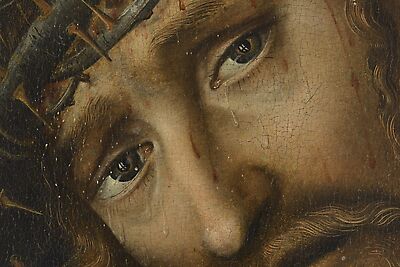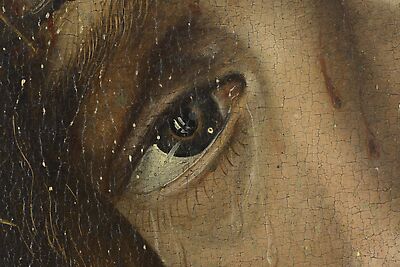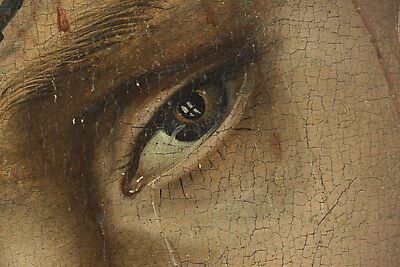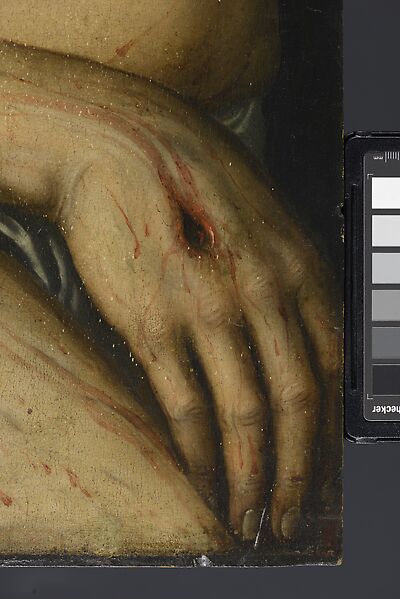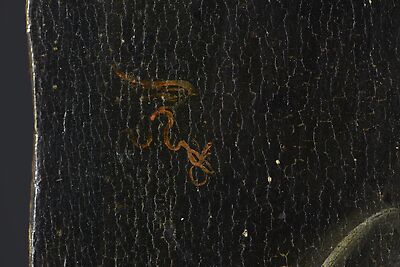Support
The following methods of examination were employed:
Stereomicroscopy, XRF-Analyse (Thermo Scientific - Niton XL3t GOLDD+) UV-light, x-radiography (Oehm u. Rehbein, Leonardo/ Varex-Perkin Elmer XRPad2 4336), Infrared reflectography (Osiris 900 - 1700 nm)
- a wooden panel consisting of four vertically aligned boards with butt joints (widths along the b. from the l. 17 / 8.2 / 17.9 / 14.1 cm)
- probably limewood
- the reverse of the panel has been smoothed with a block plane transversely to the direction of the grain and the wood is exposed
- a rebate (c. 0.7 cm in depth) runs around the edge of the panel and varies in width between 0.4 and 1,7 cm, suggesting that the panel was originally fitted in an engaged frame which has not survived
Ground and Imprimatura
- white ground on the recto, which extends to the edge of the panel along the bottom
- incised lines are not visible
Underdrawing
- some dark grey lines are visible in the infrared reflectogram, that were probably executed using a dry drawing material (pen, dark chalk?)
- the contours of the figure are sketchily defined with a few - occasionally long sweeping - lines
- corrects to individual forms were carried out during the painting process; owever, no significant changes were made
Paint Layers and Gilding
The following elements were detected using XRF-analysis and on the basis of their optical properties the following pigments were identified: Red: Ca, Pb, Fe, Sr (Hg) Ca: chalk/ gypsum (?); Pb: lead white/ red lead (?); Fe: iron oxide/ ochre (?); Hg: vermilion (?)
Brown, pale: Ca, Pb, Fe, Sr, Hg
Ca: chalk/ gypsum (?); Pb: lead white/ red lead (?); Fe: iron oxide/ ochre (?); Hg: vermilion (?)
Flesh paint: Pb, Ca, Hg, Fe, Sr
Pb: lead white/ red lead (?); Ca: chalk/ gypsum (?); Hg: vermilion; Fe: iron oxide/ ochre (?)
White: Pb, Ca, Fe, Sr, Cr
Pb: lead white; Ca: chalk/ gypsum (?); Fe: iron oxide/ ochre (?); Cr: yellow/green, containing chrome (?), retouching?
Yellow: Ca, Pb, Fe, Sr (Cu)
Ca: chalk/ gypsum (?); Pb: lead white (?); Fe: iron oxide/ ochre (?); Cu: blue/green pigment, containing copper, siccative?
Reddish brown signature: Ca, Pb, Fe, Sr
Ca: chalk/ gypsum (?); Pb: lead white; Fe: iron oxide/ ochre (?)
Faded red: Pb, Ca, Fe, Sr
Pb: lead white; Ca: chalk/ gypsum (?); Fe: iron oxide/ ochre (?); organ. lake pigment?
The paint was applied with a brush in both opaque and glazed layers. The flesh paint was laid in with a pale admixture of lead white and vermilion. Shadows were added in brownish grey tones as well as semi-transparent glazes and highlights were achieved with pale flesh paint. The x-radiograph reveals the confident modelling. No major compositional changes occurred during the painting process. Details like eyes and tears appear to have been skilfully painted. For example, the circular pupils were laid in with black paint, then two white vertical lines were applied, which were subsequently divided with a black line to give the impression of a reflected window cross. The hair and beard were laid in using varying brown tones and worked up with fine lines to define single strands.
A black line along the bottom edge may be the original border.
[Blumenroth, Heydenreich, unpublished examination report, 18.07.2023]
